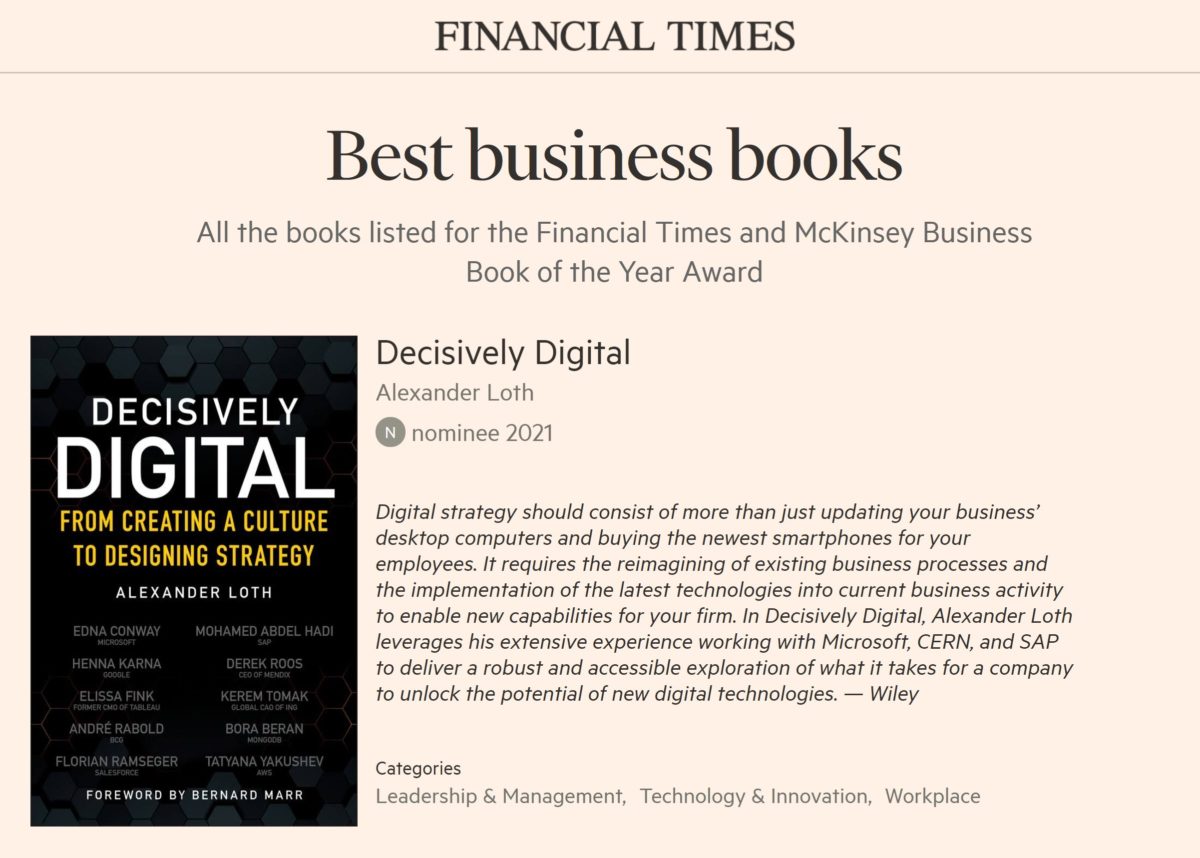Category: Technology
-

Decisively Digital is nominated for the Financial Times and McKinsey Business Book of the Year Award 2021
The publisher of Decisively Digital, Wiley, has informed me that our book is now officially nominated for the prestigious Financial Times and McKinsey Business Book of the Year Award 2021. The nomination itself is a very big achievement. Let’s keep our fingers crossed that we win this award! Thank you, everyone, for making this possible…
-
Datenvisualisierung mit Tableau: 2. Auflage des Tableau-Buchs ab heute verfügbar
Heute ist ein spannender Tag für alle Datenvisualisierungsfans und Tableau-Nutzer: die zweite, verbesserte und erweiterte Auflage des populären 📖Datenvisualisierung-mit-Tableau-Buchs ist ab sofort verfügbar! Dieses aufschlussreiche und praktische Handbuch ist Ihr Tor zu effektiver und intuitiver Datenvisualisierung mit Tableau, einer der führenden Plattformen in diesem Bereich. Die neueste Ausgabe zeichnet sich nicht nur durch ein auffälliges,…
-
The Data Operator: How the World’s Largest Particle Accelerator Boosted My Career
The world’s largest particle accelerator not only unleashed hidden particles but also unlocked my career growth. As a young data scientist, my journey at CERN was a career boost that laid the foundation for my future endeavors. Read about my first day at Microsoft here. Der Daten-Verarbeiter: Der weltgrößte Teilchenbeschleuniger war für Alexander Loth ein…
-

Decisively Digital is the #1 New Release in Organizational Change on Amazon
Our book Decisively Digital is the number 1 new release in Organizational Change on Amazon! The paperback of Decisively Digital became available yesterday in the US, with other territories soon to follow. Decisively Digital companion website Announcement on LinkedIn Amazon product page It took a village to finish this book. Many thanks to all of you:
